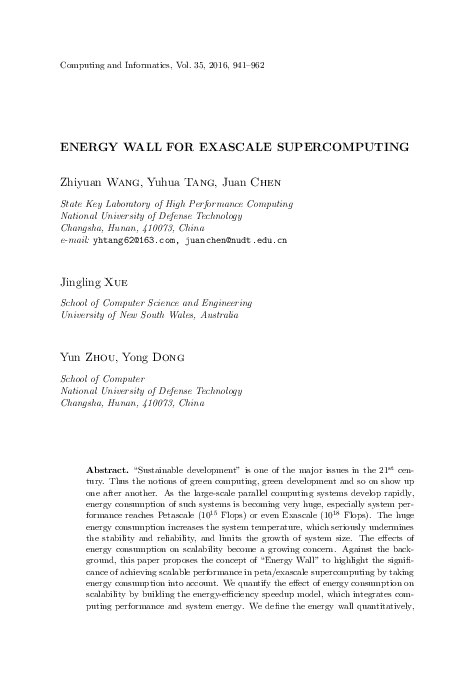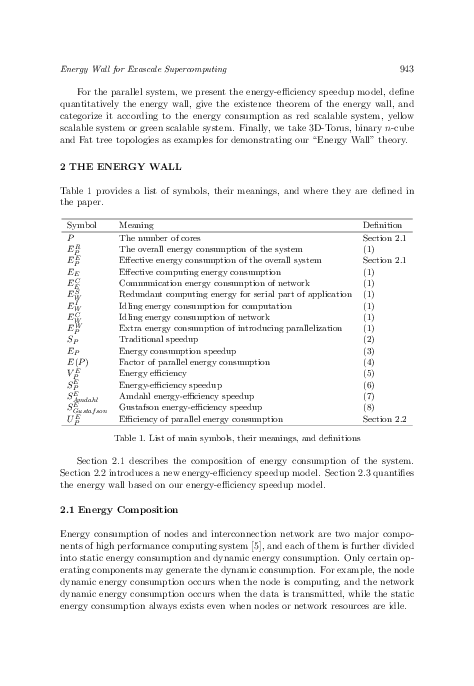Energy Wall for Exascale Supercomputing
keywords: Energy consumption, scalability, exascale computing, energy-efficiency speedup, energy wall
``Sustainable development'' is one of the major issues in the 21 rm st century. Thus the notions of green computing, green development and so on show up one after another. As the large-scale parallel computing systems develop rapidly, energy consumption of such systems is becoming very huge, especially system performance reaches Petascale (1015 Flops) or even Exascale (1018 Flops). The huge energy consumption increases the system temperature, which seriously undermines the stability and reliability, and limits the growth of system size. The effects of energy consumption on scalability become a growing concern. Against the background, this paper proposes the concept of ``Energy Wall'' to highlight the significance of achieving scalable performance in peta/exascale supercomputing by taking energy consumption into account. We quantify the effect of energy consumption on scalability by building the energy-efficiency speedup model, which integrates computing performance and system energy. We define the energy wall quantitatively, and provide the theorem on the existence of the energy wall, and categorize the large-scale parallel computers according to the energy consumption. In the context of several representative types of HPC applications, we analyze and extrapolate the existence of the energy wall considering three kinds of topologies, 3D-Torus, binary n-cube and Fat tree which provides insights on how to mitigate the energy wall effect in system design and through hardware/software optimization in peta/exascale supercomputing.
mathematics subject classification 2000: 68M01
reference: Vol. 35, 2016, No. 4, pp. 941–962


